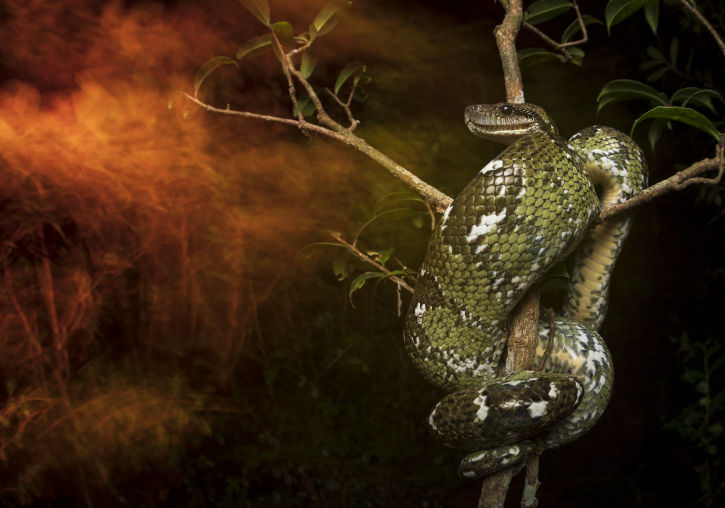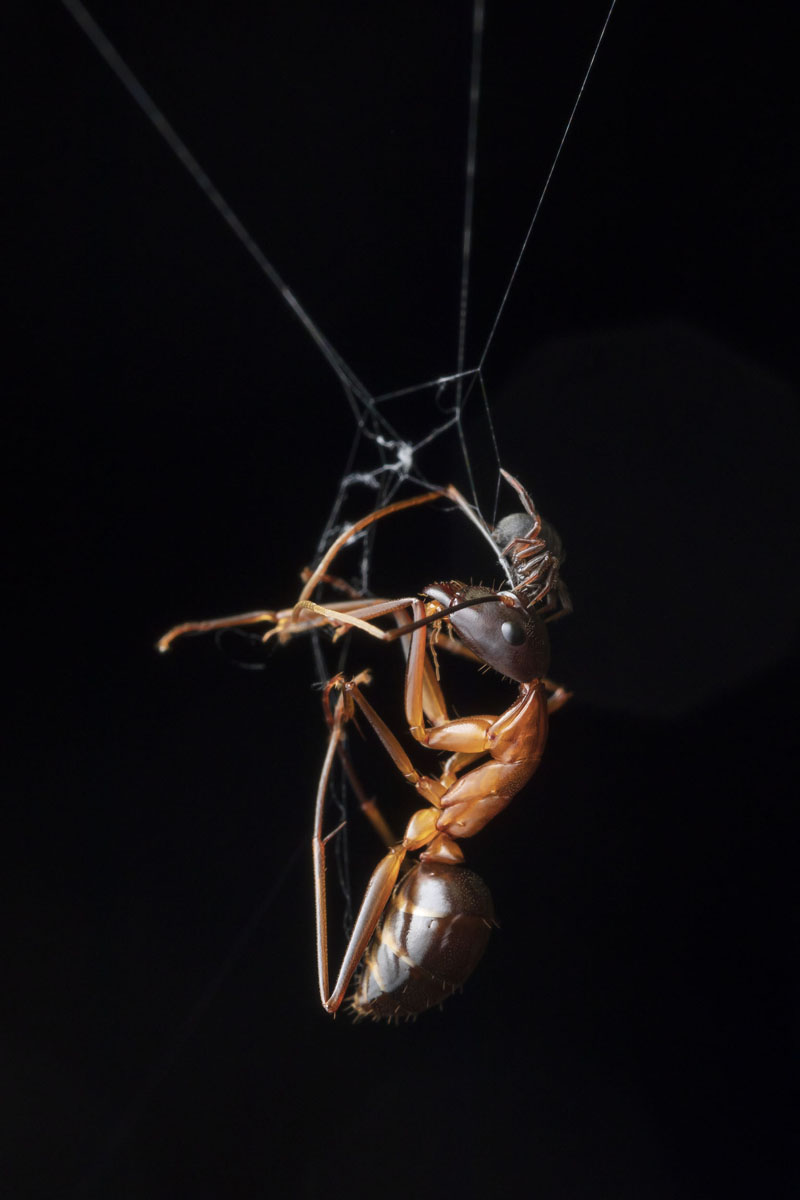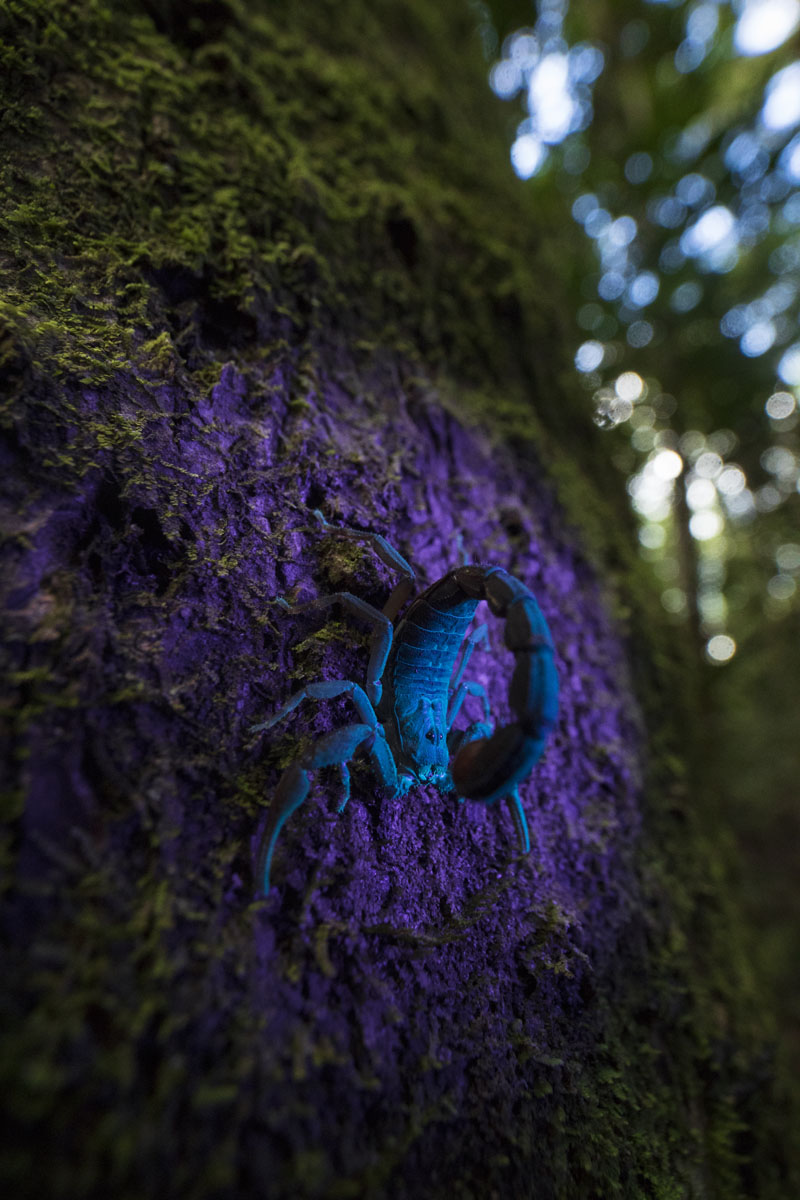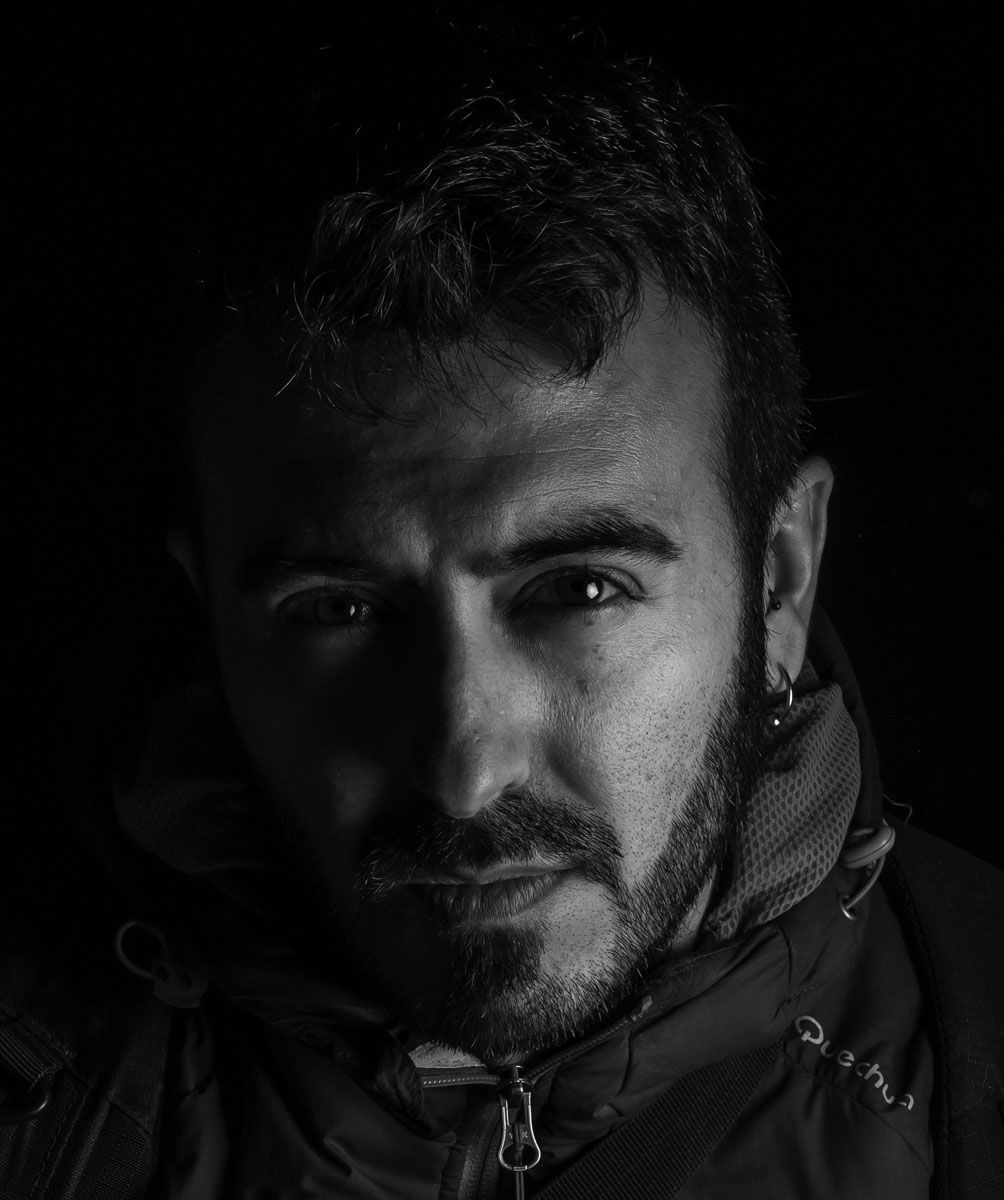
Roberto García Roa, postdoctoral researcher at the Cavanilles Institute of Biodiversity and Evolutionary Biology (ICBIBE) at the University of Valencia, has been awarded the first prize (Overall Winner) of the annual photography competition convened by the British Ecological Society, the Capturing Ecology. García Roa has been winning awards in this competition for 5 years, both the absolute (2015) and in different categories.
In particular, the Waiting photograph is the one with which he has received the award of absolute champion. This image shows an adult Madagascar tree boa (Sanzinia madascariensis), one of the largest snake species on the island. This non-poisonous reptile is increasingly difficult to find, even more so in large specimens and in periurban areas due to deforestation and poaching. “The use of red external lighting allowed me to create a dramatic environment as a metaphor for the uncertain context that these iconic snakes face in their day-to-day life. Unfortunately, I also found other specimens of this species that had been sadly run over on nearby roads”, explains Roberto García Roa.
The president of the British Ecological Society (BES), Professor Richard Bardgett, commented that “this dazzling image not only captures the beauty of the Malagasy tree boa, which is endemic to the island of Madagascar, but also its vulnerability, especially hunting and fire. It’s a remarkable image and worth winning”.
In recent years, scientist and photographer Roberto García Roa has won different awards, both national and international, from prestigious scientific and naturalistic societies. With his work as a photographer, García Roa tries to create bonds between society and the natural world. Moreover, he believes that science and photography are two tools that together can be very effective in raising awareness of the wonderfulness of the world in which we live, and of the urgent need we have to protect it.
“A photograph can make the one seeing it travel to a small corner of the world where he or she feels what you felt. If you manage to create that bond, it will be easier for that person to feel that moment as their own, and understand why it is so necessary to protect places like this”, says the photographer. With this philosophy, García Roa is currently developing a project in which to illustrate the extravagant mechanisms that different species use to communicate or disguise themselves. “Being aware of the natural treasures that exist all over the planet encourages us to adopt and protect like ours those treasures that are miles away, and can also break the human border with the natural environment”.
The Overall Winner award must join the awards in the Dynamic Ecosystems category, in which the interaction between different species within an ecosystem must be demonstrated, and in Up Close and Personal, where the complexity of nature using a macro approximation.
With the Small warrior image, the researcher has been the winner of Dynamic Ecosystems. This image shows a spider less than a centimetre preying on an ant that doubles in size. According to the author, “these arthropods show a great diversity of predation techniques and, in many cases, size does not matter”.
In the Up Close and Personal category the winner was Fluorescence. García Roa states that “the discovery of the ability to emit fluorescence on scorpions was a milestone as it made it possible to easily locate them in dark areas through ultraviolet lights. With this technique I was able to find this small scorpion in the middle of vegetation of a thick forest of Madagascar”.
Also noteworthy are his Movement or not and Cooperation photographs that have been selected as Highly Commended.
The winning images can be seen at the society’s annual conference in Belfast in December, which will bring together 1,200 Ecology specialists from more than 40 countries. They will also be exhibited in a free exhibition at the Ulster Museum from February 11, 2020 onwards.
British Ecological Society
The British Ecological Society (BES), founded in 1913, is the world’s oldest ecological society and promotes knowledge of ecology through its academic journals, lectures, scholarships, educational initiatives and academic papers. The entity has about 6,000 members from around 120 countries and annually convenes the Capturing Ecology photography competition, in which both ecology specialists and international students participate.
Photo captions annex:
- Small warrior: Winner category Dynamic Ecosystems
- Fluorescence: Winner category Up Close and Personal
- Roberto García Roa
Roberto García Roa pages:
Instagram: @garcia_roa_photography
Web page: https://www.robertogarciaroa.com/photography
British Ecological Society:
https://www.britishecologicalsociety.org/membership-community/annual-photographic-competition/
Images:

.jpg)












